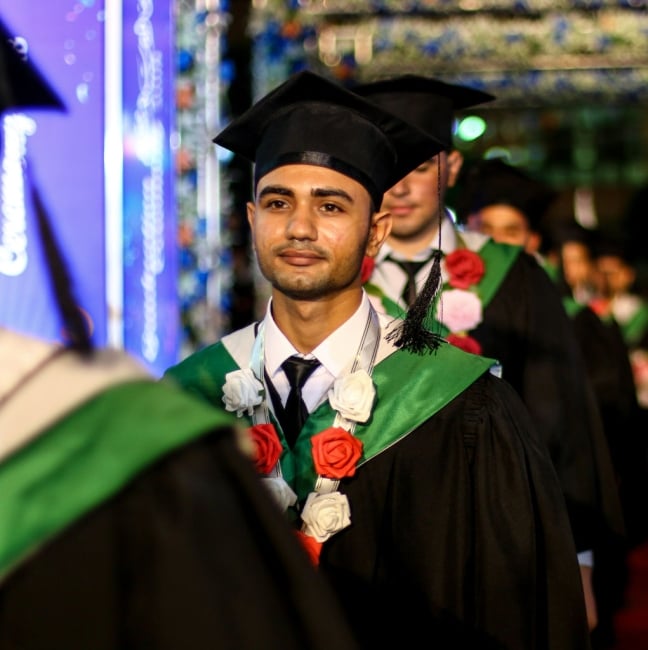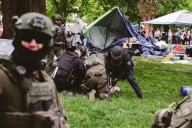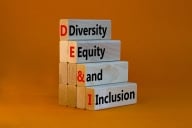You have /5 articles left.
Sign up for a free account or log in.

Graduation ceremony at University College of Applied Sciences in Gaza City
Sopa Images/Light rocket/getty images
In the most recent war between Hamas and Israel, 4,000 rockets were fired at Israeli population centers, more than 200 Palestinians and 15 Israelis died, and much of the Gaza military infrastructure -- some of it in densely populated neighborhoods -- was leveled. Mainstream and social media, along with some politicians, blamed the violence largely on Israel’s continued presence in the West Bank and Jerusalem. Since then, we’ve seen a palpable “piling-on,” a measurable upswing in global opposition to Israeli policies, culminating last month with the remarkable decision by a multinational corporation to prevent its ice cream from being sold in the West Bank.
The occupation, now in its 55th year, is a terrible problem for Arabs, Israelis and their friends around the world who still dream of a viable two-state solution. But conditions in the region are more complicated than suggested by much popular punditry. And as one astute commentator correctly notes, advocates for unilateral Israeli withdrawal are often flummoxed when asked for specific ideas on how to implement such a policy and on what its repercussions might be.
Readers will probably be relieved to know that here I do not attempt yet another argument for or against withdrawal. Rather, I focus on one facet of social and economic life in the contested territories: trends in higher education, which reflect complexity that is absent in the musings of most commentators. Although, of course, they must be treated with caution and caveats, data drawn from websites of colleges and universities (and some independent sources) are illuminating.
It may come as a surprise that from 1948 to 1967, when Jordan controlled the West Bank and Egypt controlled Gaza, no new universities were established in those territories. (One agricultural school became a technical institute offering associate degrees during that period, one primary school became a teacher preparation institute and another teachers’ institute was established). What may be more surprising is that, since then, the region has become home to a vibrant, albeit struggling, network of postsecondary institutions.
Birzeit University, located near Ramallah, the administrative capital of the Palestinian National Authority in the West Bank, was founded as a girls’ school in 1924 and renamed Birzeit College in 1942. It had become home to prominent scientists and other intellectuals from the Arab world and elsewhere. Its official website notes with pride that a “landmark in the [institution’s] academic biography” was celebrated on July 11, 1976, when “the university awarded its first bachelor’s degrees in Arabic literature, English literature, business administration, Middle East studies, sociology, mathematics, physics and chemistry … [In] the mid-1990s … the faculty for graduate studies … introduced … an international summer program for foreign students who wished to study Arabic and to experience how Palestinians cope under occupation.”
Today, Birzeit enrolls more than 15,000 students in 114 academic programs. Earlier this month, 6,000 students from the 2020 and 2021 cohorts, combined because of the COVID crisis, graduated.
Other West Bank institutions include Bethlehem University, about a 25-minute drive south from Jerusalem. It was established as a Catholic institution in 1973 and today offers programs in health sciences and education, development and international cooperation, biotech, tourism, social service, oncology and palliative care, and various continuing education programs. The institution held its 45th commencement in June and July of this year, conferring degrees on 746 graduates.
Al Quds University was formed by the unification of its several independent colleges, a process that began in 1984 and culminated in “official amalgamation” in 1991. Located in Jerusalem and nearby neighborhoods, the university now enrolls about 13,000 students in arts, medicine, dentistry, law, Quran and Islamic studies, and engineering. It enjoys many international partnerships, including with Brandeis University and Bard College. The goal of one program of the university is, according to Al-Fanar Media, “training the next generation of lawyers to confront the numerous and complex legal issues that arise for Palestinians living in Jerusalem and the occupied territories.” Last year, scientists at Al Quds developed a ventilator to treat COVID victims in the region.
A former president of Al Quds, Sari Nusseibeh, worked with Menahem Yaari, then president of the Israel Academy of Sciences and Humanities, to establish the Israel-Palestine Scientific Organization in 2004. The endeavor began with modest support from UNESCO and Israeli, Arab, European and American donors. Early optimism waned as the organization failed to attract adequate funding; disruptions during the second intifada and Gaza war of 2014 further eroded international interest, and grants to support worthy research by Israeli-Palestinian teams have been anemic.
Turning now to Gaza, we see a similar pattern: stagnation under Egyptian rule, interrupted progress after 1967. Al Aqsa University, founded in 1955 as a teachers’ college, became a university in 2001. Today, it enrolls 27,000 students on campuses in Gaza City and Khan Younis.
It is unclear what effect Israel’s withdrawal from Gaza in 2005 may have had, but in a 2018 poll of Gazans, 46 percent of respondents held the Palestinian Authority and Hamas responsible for worsening conditions generally, while 34 percent blamed Israel. In any case, there are now approximately 10 postsecondary institutions serving Gaza’s total population of under two million. The trend hints at what would be possible if peace breaks out and investments shift from tunnels to test tubes, from guns to greenhouses.
Questions Worthy of Continued Inquiry
These data provide context for the increasingly heated critiques of Israel among academics and others concerned with equity and access. For example, several hundred New York University faculty members recently advocated “noncooperation” with their Tel Aviv campus until Israel ends “discriminatory policies that limit Palestinian students’ access to education.” Given the condition of education in the West Bank and Gaza, however, the NYU petition must have been focused on a different issue, namely whether Palestinians who live in the contested areas -- and who are not Israeli citizens -- can enroll in Israeli colleges and universities. According to Israeli law, they are not barred, though they must apply for a visa and comply with rigorous security requirements.
That raises an important question: Should Israel eliminate restrictions on matriculation in Israeli universities for Palestinians who are not Israeli citizens? Maybe, but universities everywhere, whether they face real or perceived security risks or not, struggle to set fair admissions criteria for international students. A genuine peace accord might include or eventually lead to mutually beneficial exchange arrangements, modeled perhaps on the way students and faculty members in European Union countries cross borders to advance education and research.
What about the situation of Arab citizens of Israel? They are still underrepresented in some Israeli universities, but the trend is up. At the Technion, one of Israel’s premier science and technology institutions, Arabs make up 20 percent of the enrolled student body, about their share of the total population. The Western Galilee College, in Akko, serves one of the poorer regions of Israel; a senior official there told me that roughly 40 percent of its 4,500 students are Arab and 75 percent are first generation.
Outside the formal education sector, too, economic and social indicators are telling. In the West Bank, the poverty rate dropped from 19 percent to 14 percent between 2009 and 2017; the literacy rate for all 15-year-olds is 97.2 percent compared to 97.8 percent in Israel. Strident criticism of Israel by gender studies faculty on some American campuses is puzzling given that Israel has a robust and protected LGBTQ community, the literacy rate ranks third among 17 countries of the Middle East and North Africa, and Palestinian women are among the most educated in the Middle East.
Although these data should be uplifting -- expanding access and reducing the effects of inequality on educational opportunity are global challenges -- it would be irresponsible to jump to simplistic causal claims. My point is certainly not that the economic progress suggested here is sufficient to justify denial of Palestinian national aspirations.
But the data raise questions worthy of continued inquiry. For example, would the gains have been made if Israel had found willing partners with whom to negotiate a viable withdrawal from the territories after the Six-Day War? Quite possibly. Moreover, as one prominent Israeli educator pointed out to me, it is plausible that the occupation strained -- or even severed -- ties with universities in neighboring Arab countries, prevented travel and interrupted whatever academic exchange and interactions had been in place, as well as possibly created incentives for the growth of institutions within the territories. Answers to these and other questions warrant systematic and objective research, and could be useful if and when genuine peace talks resume.
Perhaps the most important question is whether the observed momentum in educational opportunity will be sustained under whatever solution ultimately does grant Palestinians the more complete autonomy they deserve and Israelis the safety they require. Let us hope. Meanwhile, the increasingly popular blame-Israel game, including flawed allegations of “settler colonialism” and bizarre comparisons to apartheid, undermines evidence-informed policy making, calcifies ideological extremism and inhibits prospects for peaceful reconciliation.








